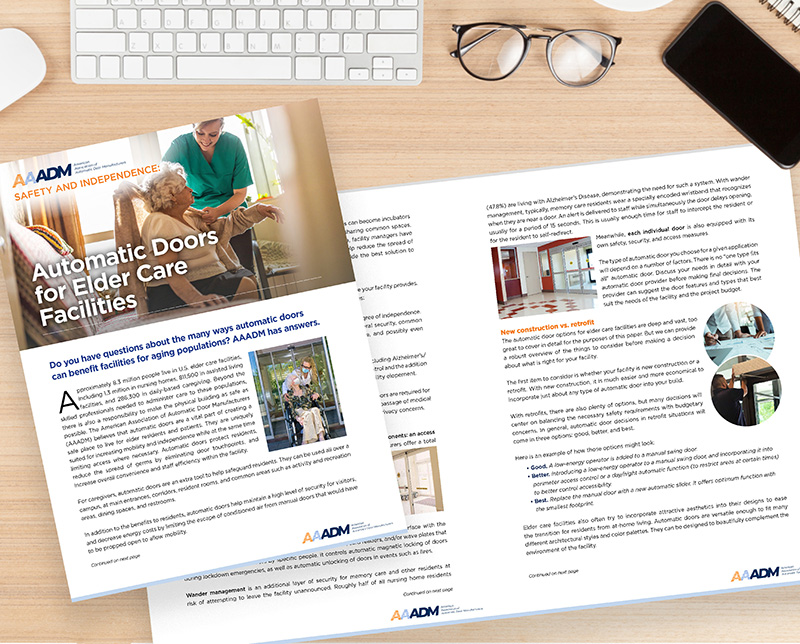
Boston, MA Approximately 8.3 million people live in elder care facilities in the U.S. Beyond the skilled professionals needed to administer care, there is also a responsibility to make the physical building as safe as possible. The American Association of Automatic Door Manufacturers (AAADM) believes that automatic doors are a vital part of creating a safe place to live for nursing home residents. They are uniquely suited for increasing mobility and independence, while at the same time limiting access where necessary.
AAADM has created a new white paper on this topic, titled “Safety and Independence: Automatic Doors for Elder Care Facilities,” which is available on the association’s website. The paper outlines the many ways automatic doors can benefit facilities for aging populations. The content can serve as a starting point for facility managers interested in retrofitting an existing building or in using automatic doors in new construction. It can also help door manufacturers and installers start a conversation with this audience.
Automatic doors are a tool to help safeguard residents. They can be used all over a property, at main entrances, corridors, resident rooms, activity and recreation areas, dining, restrooms, and more. In addition to the benefits to residents, automatic doors help maintain a high level of security for visitors, reduce health risks, and keep staff and employees operating efficiently and effectively.
To download the white paper, visit www.aaadm.com/white-papers/index.html.
The American Association of Automatic Door Manufacturers (AAADM) is a trade association of manufacturers of automatic pedestrian door systems. AAADM was founded in 1994 with the following mission: To increase awareness of automatic doors and accessibility needs; to increase education, training, and professionalism among installers and service providers; and to generally promote the safe use of automatic doors.
Each year on March 19, AAADM celebrates National Automatic Door Day to raise awareness about the many benefits of automatic doors, including providing access to those with physical challenges and helping to prevent germs by eliminating the need to touch door handles.
